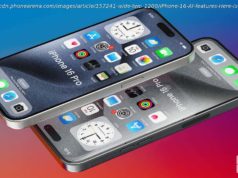A big, expensive phone that pushes all the right buttons
The Galaxy S23 Ultra (starting at $1,199.99) carries the Galaxy Note torch forward as the lone smartphone in Samsung’s lineup to include the S Pen stylus. The company takes the kitchen-sink approach with the S23 Ultra; it has pretty much every feature a flagship phone shopper could want, including high-quality hardware, an outstanding display, blistering performance, and top-notch cameras. Its oversized footprint and price give us some pause, but many buyers are likely to look past these compromises for such a capable phone. If you don’t need the stylus or the extra cameras, the slightly smaller and more affordable Galaxy S23+ (starting at $999.99) might better serve you. But if you want it all, the Galaxy S23 Ultra is our Editors’ Choice winner for high-end Android phones.Beautiful, But Big
The Galaxy S23 Ultra is the largest and most capable member of the S23 family, which also includes the S23+ ($999.99) and the S23 ($799.99). It stands apart from its less-expensive stablemates because of its squared-off design, built-in S Pen, and extra cameras.
The S23 Ultra takes many of its design cues from last year’s S22 Ultra. The phones are the exact same size at 6.43 by 3.07 by 0.35 inches (HWD), though the S23 Ultra weighs more at 8.25 ounces than the S22 Ultra (8.07 ounces). The Galaxy S23 (5.76 by 2.79 by 0.3 inches, 5.93 ounces) and Galaxy S23+ (6.21 by 3.0 by 0.3 inches, 6.91 ounces) are much smaller and lighter for comparison. There’s simply no denying the S23 Ultra is a massive piece of hardware. Slapping a case on it, which we recommend given the price tag, just adds to its size and weight.
The glass-and-metal sandwich design is common for today’s top devices and no company does it better than Samsung. The S23 Ultra features an Armor Aluminum frame that partially integrates recycled materials. Corning’s Gorilla Glass Victus 2 adds front and back protection against drops and scratches.
Samsung offers the phone in four main colors: Cream, Green, Lavender, and Phantom Black. If those don’t appeal, Samsung’s website offers exclusive colors such as Graphite, Lime, Red, and Sky Blue. Samsung says it uses recycled dyes to color the phones. The matte finish on the rear panel is appealing, as is the color-coordinated finish for the frame in between.
Speaking of the frame, it’s as pointy as ever. The sharp corners are a design feature I wish would go away. Cramming the phone into your pants pocket can be uncomfortable. Samsung did, however, reshape the metal along the phone’s side edges to make it a bit more rounded. The company also flattened out the display glass a little. The S22 Ultra had steeply curved side edges and a thin metal rail, but Samsung reduced the curvature by 30% for the S23 Ultra. Both changes improve the experience of holding the phone.
Samsung didn’t make significant changes to the camera module’s design. The Ultra’s four rear cameras and laser focusing array haven’t moved from the S22 Ultra, though the individual lenses are a touch larger. It’s a more attractive approach than Samsung took with previous models.
The phone meets the strict IP68 rating for protection from dust and water. It can survive a 30-minute dunk in up to 1.5 meters (about 5 feet) of water without worry. The Apple iPhone 14 Pro Max ($1,099) and the Google Pixel 7 Pro ($899) both share this same level of protection.
A few basic controls accent the frame. The power button and volume toggle are on the right side, along with a plastic cutout that covers the 5G antennas. Travel and feedback are excellent, though the power button is a bit small. The bottom of the phone is busy. From left to right, it houses the S Pen slot, a downward-firing speaker, a USB-C port, and a SIM card tray.
Samsung built a fingerprint reader into the display. I found it comfortable to reach, and it was a cinch to train and use. If you prefer facial recognition methods, a secure face ID tool sits above the screen. It’s not quite as fast as the fingerprint reader, but can be more convenient in certain circumstances (such as when you are wearing gloves).
In all, the Samsung Galaxy S23 Ultra might be too large for some buyers, but we can’t fault the otherwise top-notch hardware. A Stunning Screen
The S23 Ultra has one of the best screens you can find on a smartphone. Though Samsung made only minimal improvements to the display compared with last year, it delivers an excellent experience just the same.
Samsung opts for a 6.8-inch Dynamic AMOLED 2X Infinity-O screen with an adaptive 120Hz refresh rate, which helps balance power and performance. The screen can dynamically alter its refresh rate from 1Hz up to 120Hz depending on the activity to conserve battery or enable smooth scrolling. It has QHD+ (3,088 by 1,440) resolution, for a pixel density of 501ppi. The Pixel 7 Pro actually has a slightly higher pixel density at 512ppi, whereas the iPhone 14 Pro Max’s is lower at 460ppi. The S23 and S23+ have 6.1- and 6.6-inch 120Hz displays, respectively, with FHD+ resolution (2,040 by 1,080 pixels).
The real upgrade is brightness. The screen puts out between 1,200 nits (typical) and 1,750 nits (peak outside). That’s dramatically better than the 1,200-nit max of last year’s S22 Ultra, though it falls short of the 1,600 nits (typical) and 2,000 nits (peak outside) of the iPhone 14 Pro Max. I held the S23 Ultra and the 14 Pro Max next to one another outside under direct sunlight and the iPhone does look slightly brighter, but not enough so to give it a serious competitive edge. Either way, the S23 Ultra’s display is easily visible under even the harshest lighting conditions.
Samsung allows for plenty of customization. First, you can alter the resolution between QHD+, FHD+, and HD+ depending on whether you want to see all the pixels or save power. You can also take advantage of adaptive brightness, blue light settings, color profiles, text and icon sizing, Samsung’s Edge panels (app shortcuts), the navigation bar (for gestures), touch sensitivity, and screen savers. Tweaking these leads to a more personalized experience.
The selfie camera interrupts the screen at the top, but the bezels between the display and the metal frame are so thin that they are practically nonexistent.
Display competition is tight at the top of the market, but the S23 Ultra impresses and performs well against its chief rivals.S Pen Prowess
The S Pen stylus continues to clearly set the S23 Ultra apart from the S23 and S23+. The S Pen tucks into a slot on the lower edge of the phone on the left side. A gentle press pops out the stylus’ head, making it easy to grab and slide all the way out.
The S Pen is a smallish stylus. It has a slightly flat profile and a matte finish to help with grip. A utility button on one side enables a range of actions, such as advancing PowerPoint slides or triggering the camera shutter (this is really helpful). Samsung didn’t claim any improvements to the S Pen’s responsiveness this year. That said, it’s still the best stylus experience you’re going to get from a modern smartphone. It’s an incredibly fluid experience, and the small tip has a solid feel when you write on the glass.
The S23 Ultra carries over the same S Pen-focused software suite of the S22. That means features like Smart Select (for grabbing items off web pages), Translate (for selecting and translating text), S Pen to text (for transcribing), and Air Actions (for motion-based controls) are all available, with no new functionality.






